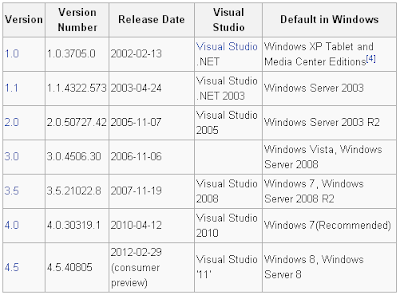.Net History
Microsoft .Net is a new internet technology or rather strategy introduced by Microsoft. .Net was originally known as the NGWS (Next Generation Windows Services) which was said to be an Internet based platform of Next Generation Windows Services.Before the official announcement of .Net, NGWS was the term used to describe the above phrase.
According to Steve Ballmer who quoted in January 2000, “Delivering an Internet-based platform of Next Generation Windows Services is the top priority of our company. The breakthroughs we’re talking about here include changes to the programming model, to the user interface, to the application integration model, the file system, new XML schema…..”
One of the most important terms that you will come across after .Net is the .Net Framework. Do you have any idea about what exactly is the .Net Framework? The .Net Framework, by definition, is the infrastructure for Microsoft .Net Platform. The .Net Framework provides a unique environment that can be used for developing, deploying and executing various Web Services independent of the platform.
.Net Framework
.Net Framework is a software framework developed by Microsoft. It includes a large library and language interoperability (each language can use code written in other languages) across various programming languages.
.Net Frameworks's base class library provides user interface, data access,database connectivity, web application development and network communications. .Net Framework is intended to be used by most new applications created for the Windows platform.
.Net Framework Versions
Design Features
Common Language Runtime Engine(CLR):- The Common Language Runtime is the execution engine of .Net Framework. All .Net programs execute under the super vision of CLR, guaranteeing certain properties and behaviors in the areas of memory management, security, and exception handling.
Language Independence:- The .Net Framework introduces a Common Type System (CTS). The CTS specification defines all possible data types and programming constructs supported by CLR and how they may or may not interact with each other conforming to the Common Language Infrastructure (CLI) specification.
Security:- The design is meant to address some of the vulnerabilities, such as buffer overflows, which have been exploited by malicious software. Additionally, .NET provides a common security model for all applications.
Base Class Library:- The Base Class Library (BCL), part of the Framework Class Library (FCL), is a library of functionality available to all languages using the .NET Framework. The BCL provides classes that encapsulate a number of common functions, including file reading and writing,graphic rendering, database interaction, XML document manipulation, and so on.
Refrences:-

No comments:
Post a Comment